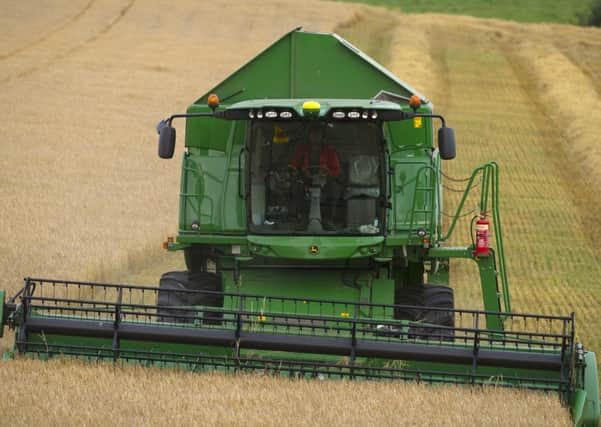A realistic viewpoint on falling tenancy figures


It does in Scotland, hovering over all tenant/landowner discussion since right to buy for some tenants was introduced by the Scottish government a decade ago.
No doubt the decline in tenanted land in Scotland from 30.1 per cent of land area in 2003 to 24.1 per cent this year is related to landowners’ fear of right to buy, and how that might become more threatening from their point of view if the Scottish independence vote of 2014 is ‘Yes’.
Advertisement
Hide AdAdvertisement
Hide AdAnd yet, a Bank of Scotland report last month indicated that in 1982 slightly more than 40 per cent of Scotland’s land was tenanted. And in the late 1800s when the great landowners had even more influence than they have today and forelock touching was mandatory for the peasants, about 75 per cent of British farmland was tenanted.
In short, decline in tenancies is a historical trend as, like house buying instead of renting, many farmers in various ways have taken the chance to become owner-occupiers and landowners have sold land because they needed the money.
The trend in Scotland might have accelerated because of more than a decade of change in the political landscape with right to buy high on the agenda, but it is still a continuation of a trend, not a new development.
An irony is that as the area of tenanted land and number of tenants declines, the amount of political time devoted to the subject and the number of high-profile cases revolving round tenancies seems to have increased.
Advertisement
Hide AdAdvertisement
Hide AdFrom memory, no recent cases have ended happily for the tenant disputing a landowner’s claim, while at least one, involving a long legal battle about termination of a tenancy, ended tragically with a suicide.
That was an extreme case. For most so-called secure, long-term, tenancy farmers the more usual aggravation is rent reviews.
It’s a given that landowners want a rent increase at every three-year review, while tenants, regardless of whether the three years since the last one have been good, bad, or indifferent for farming, don’t want to pay any more than they are.
Given my views and that I’ve never made any secret of them, I can’t understand why some readers still complain that I seem to be on the side of landowners and large-scale farmers. Rubbish. What I have always tried to do is be objective and point out that fewer farmers on a larger scale is a historical trend going back at least two centuries and that, as indicated by statistics above, owner-occupation and in-hand estates are replacing tenancies. I’ve never said I like that or think it a good thing, only that it’s happening and that the family farm I knew as a lad is fading into history.
It’s called realism.
Advertisement
Hide AdAdvertisement
Hide AdIt also means I accept that there are good landowners as well as bad, as there are good and bad tenants – and that much of the trouble about rising rents for sitting tenants is the number of farmers desperate to get more land by offering above market value rents. Not for the first time, as is said about sheep, a farmer’s worst enemy is often another farmer.